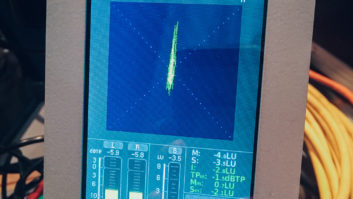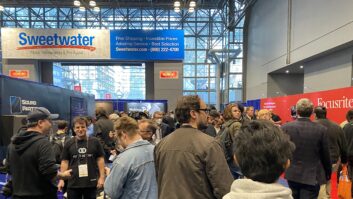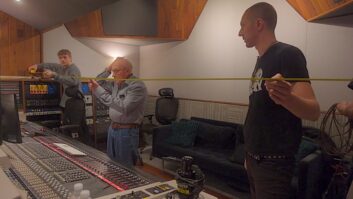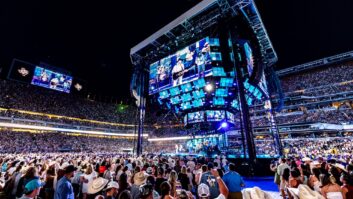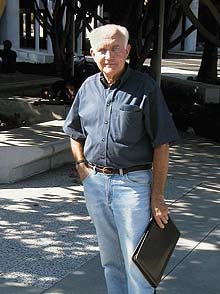
George Augspurger
Photo: Don McRitchie, www.audioheritage.org
What are some of your recent projects?
I have a number of relatively small studio projects — a couple in the U.S., a couple in Brazil, possibly one in Central America and a number of mastering studios for engineers who left larger facilities and are setting up their own rooms. I’m also doing a fair amount of architectural acoustics for churches and corporate facilities.
Has your approach changed over the years?
I’ve never had one locked-in approach with my studio and control room designs, but they’ve remained pretty consistent over the past 15 or 20 years. About 15 years ago, we started getting decent-sized control rooms — 20×30, 18×25 or something like that. Large enough to actually hear something in the room without a lot of terrible low-end reflections. It’s made a big difference in the way that people mix records.
The current standard is a reasonable amount of space. There aren’t any tiny control booths anymore and — except for one or two I can think of — nobody in their right mind would try to do high-quality commercial mixing in an 8×10 office. Having said that, the counterweight is that a lot of people are doing commercial mixing in 10×12 bedrooms. Nobody claims that’s the ideal environment — everybody would rather mix in a larger room with good acoustics so they can hear the mix under good conditions.
Is ceiling height a major part of that?
Yes and no. Over the years, a lot of great stuff has come out of places like New York studios in old buildings where the floor-to-floor measurement was 10 feet, which meant you only had about 8-and-a-half feet to work with. And in some cases, it can be a very in-your-face and very focused — but very workable — environment.
How do you define a good-sounding mix room?
What makes a good mixdown room pretty much settled down concurrently with the introduction of surround sound, which is interesting because nobody’s mixing much surround sound as far as the studios are concerned. But what was developed as a good acoustic environment for mixing home theater and broadcast surround mixing also turned out to be a good environment for 2-channel stereo mixing.
There’s a difference between a good-sounding room and a very dead room. Rappers like very dead rooms. But a good mix room for most engineers is more like a good mastering room, where the room acoustics are part of the mix. If you try to do a good 2-channel mix with some ambience in it and some effects, you may be totally misled by a room that’s too dead.
You’re known for designing large high-performance mains. Did you ever want to create a near-field speaker?
Not really. My track record in terms of judging near-fields — in relation to what most commercial engineers would like — has not been that great. I’ve been involved with manufacturers several times on near-field projects, and what I thought sounded great, did not impress recording engineers.
But loudspeakers have gotten better and more consistent — maybe because everything’s made in China now. Last week I tested six commercial tweeters. These right-out-of-the-box, little $40 tweeters weren’t close — they were identical. I was amazed they had that level of consistency. And the same holds true for some of the small woofers used in console-top systems. Speakers have gotten a lot more consistent, and most of these smaller monitors are also self-powered, which also adds consistency. So you don’t have that other unknown.
Do you have a favorite room you’ve done?
Any designer or architect will usually say their last one, but one of my favorites is still the Studio 1 control room at Sunset Sound. That’s pretty much my standard for middle-of-the-road pop music — for what 2-channel pop albums should sound like.
Can you offer any advice for small studios?
The main thing is give yourself enough room to experiment with console and speaker location. One mistake in a lot of these rooms is putting the console almost against the front wall and speakers against the front wall to make enough space for the people and outboard gear. This will sound terrible. By moving it back a foot, you can have some decent sound. A little extra space can make a huge difference.
It’s pretty amazing when you start out with something that sounds really weird, and then two hours later all you’ve done is maybe take two patches of stuff off the wall, moved the console six inches and moved the speakers about a foot or two, and, miraculously, everything sounds better. But in between those two points, you’ve gone through maybe 100 incremental steps, which most people don’t have the experience to do.
